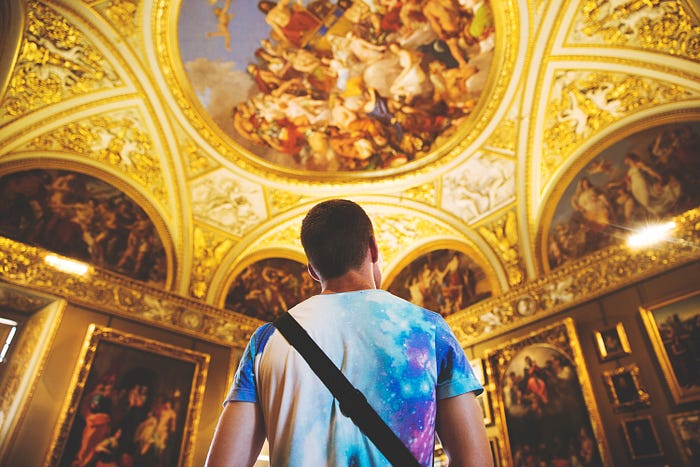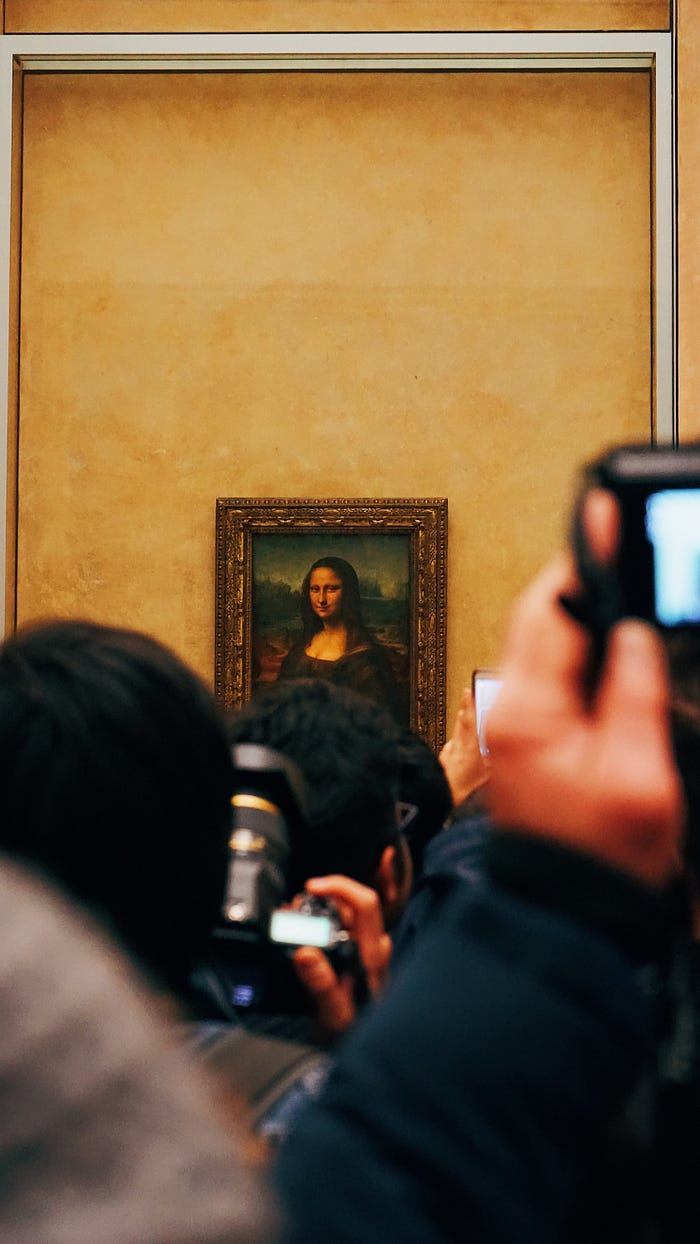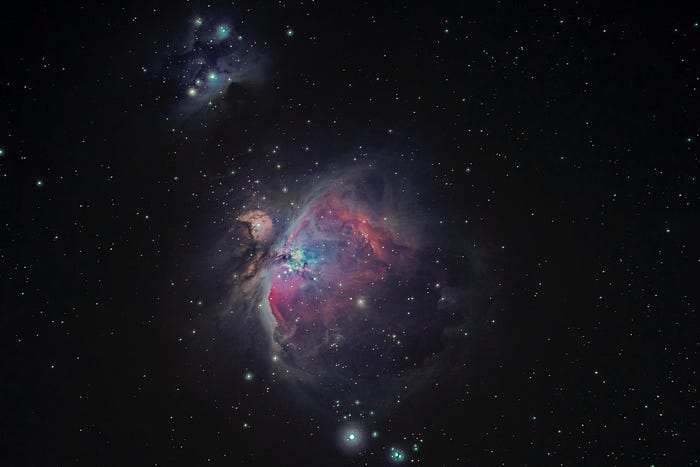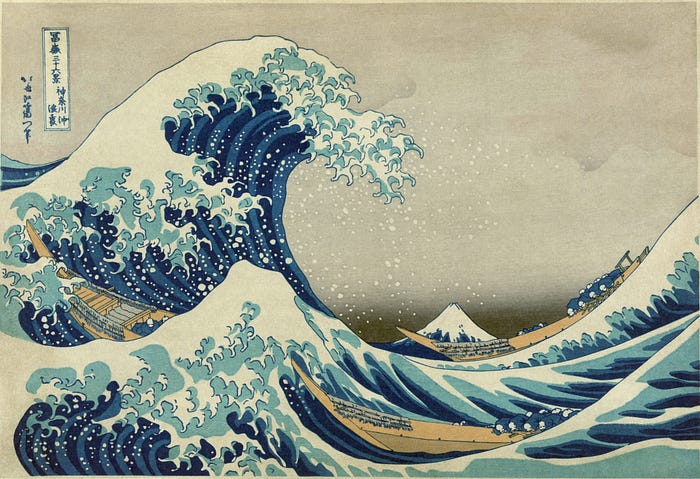The Traits of Timeless Art
Understanding this mysterious artistic quality could help you make a masterpiece.

Whether you are considering a dance, film, music, novel, painting, play, poem, sculpture, or any combination of these forms–there is one quality present in almost all master works.
It is the quality and feeling of Timelessness.
We Exist in More Than One Realm
When considering the idea of how a work of art could seem timeless, think of the world having two realms–the seen and unseen.
Plato discussed this topic in his theory of two worlds. He believed that there was the perceptible material world. A world of passing time and constant change, decay, and imperfection.
And a world of forms or ideals. A world not limited by geometry, gravity, or time.
Artists of great significance learn to be comfortable creating work that speaks to this other realm. And art of this type is not restricted to any particular style. It’s the feeling a person gets looking up at Michelangelo’s Sistine Chapel paintings, or Basquiat’s colorful pop art scribbling.

Imagining the possibility of another world beyond our consciousness offers the depth of an additional dimension to explore through artistic interpretation.
Time is man’s construct
What is time if nothing more than a social contract made between groups of people? There is not even a universal standard to time–as anyone who has traveled across different time zones or continents with different seasons and calendars can affirm.

What this means for an artist attempting to create a work of art that will be truly timeless is to realize that any ideas of time that you impose on art you make is informed by your own culture’s perception of time.
In other words, as an artist, If you seek to create work that is universal, you must transcend your perception of the present.
Timeless is the opposite of trendy
Something that seems timeless is not affected by what’s currently in fashion.
In addition to quickly becoming irrelevant–products that are “trendy” are reliant on comparisons to current norms within a small local group. What is trendy in the American northeast for example, may not even be understood in the same context in far east Asia or even closer the source in the American southwest.
The internet has contributed to a globalization of certain trends and has made the present fashions of geographical regions more accessible to people from other parts of the world. However, a trend is never a fixed target, but an evolving code that alters itself as more people participate in its adoption.

Trends can bring people together for a moment, but they can never achieve timelessness because they are destined to be replaced. Therefore, for something to be timeless, it must not be trendy. The essence of something that is timeless does not change just because people’s tastes have changed.
Timeless does not mean commonplace
For something to be timeless it must have a quality of being universally recognized–even if interpretation among people varies. Think of the concept of “age” which is expressed differently in every culture but is still acknowledged as a human quality by just about everyone.
Yet, just because something is “cultural universal,” like a shelter–does not make that construction timeless in an artistic sense. A building that provides shelter may not be viewed as timeless but simply utilitarian.
Timeless things have duality
What makes timeless things different is the air of mystery and inherent energy that permeates a timeless work of art. DaVinci’s “Mona Lisa”, Rodin’s “The Thinker”, A Jackson Pollock splatter painting, Van Gogh’s “Starry Night”, Shakespeare’s “Hamlet, Prince of Denmark”, Beethoven’s fifth, and the Swan Lake ballet all have some relatable elements, but there is also strangeness to them. A distancing effect that tells us no matter how many times we look, there will always be something more to see.

There is something that both makes these works enjoyable from one generation to the next, but also an aspect of them that remains hard for anyone to completely peg down. They feel both fully realized and unresolved. There is an undefinable depth that remains uncovered despite repeat viewings, interpretations, or performances.
It seems that a timeless creation is both a boldly personal expression of the artist who made it and a universal truth hidden under a recognizable layer of form, texture, and line.
It is both mysterious and familiar at the same time.
This quality also appears in the best lyrics of talented songwriters from Bob Dylan to Kendrick Lamar.
Is Timeless work made for two audiences?
You may disagree with me here (and if you do please respond to this article, I’d love to read your opinion) but I believe that for a work of art to be truly timeless, it must be made (either consciously or subconsciously) for two audiences.
The first audience is anyone who might encounter it in the physical world.
The second audience is God — or at least the inhabitants of the spiritual dimension.

Is this is the mystic energy we feel in the presence of something timeless? It is the reason your hair stands up on your neck when you stand below the Sistine Chapel ceiling, listen to “Tangled Up In Blue” or stroll among the Easter Island head statues?
Could that be our subconscious acknowledgement that a higher power has also witnessed and enjoyed this artistic creation?
I don’t believe that an artist has to be the follower of any religion to create timeless art, sometimes I think it happens as a byproduct of passionate inspiration. The compulsion to put a mark in the world is a strong motivation for any artist.
Ultimately, an artist has very little control whether something they make becomes timeless or not, but maybe there are a few aspirations worth considering when trying to make something timeless.
Don’t set out to be trendy, or too commonplace. Make things that have a broader appeal beyond your region of the world. Be intensely personal in your creation, but find the universal connections within your point of view. Create with energy and strive for some mystery–don’t feel the need to define everything. Imagine an audience beyond the present physical one.
Maybe there is no formula
Timelessness remains a slippery veil. Some of the great works of art we now consider to be timeless were never designed with that intention in mind.
Hokusai’s captivating “The Wave” now one of the most recognizable works of art in the world, was originally one of a series of 36 woodblock prints featuring views of Mt. Fuji. The artist certainly could not have predicted that this one piece would become one of the most produced prints of the 21st century, while the others have rarely been seen outside of the artists closest circle of admirers.

What do you think? Are there other qualities of timeless art worth mentioning? Do you disagree with any of mine? Leave a RESPONSE.
If you enjoyed this post leave some CLAPS and SHARE with someone else.
